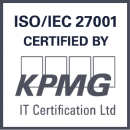7 reasons why you shouldn’t build your own AML screening or monitoring tool
Get the e-bookThis blog provides a two-minute overview of our e-book 7 Reasons Why you Shouldn’t Build your own AML Screening or Monitoring Tool. The guide draws on the lived experiences of the founding team at Salv, who previously built the tools that power compliance at Wise.
It explores the complexities and challenges associated with in-house AML tools vs third-party software, helping AML teams choose whether they should build a solution or buy one from a third-party provider.
Key takeaways from the e-book
Control vs. complexity: Building in-house offers ultimate control and visibility, but as the scope of the project expands and regulations evolve, organisations may encounter unforeseen compliance challenges that drain in-house development and product resources. When weighing the choice between in-house AML tools vs third-party software, consider the complexity of scaling while maintaining regulatory alignment.
Focus on core competencies: Organisations must prioritise their development resources. Building compliance tools can divert attention from core products, impacting customer satisfaction and business growth. One advantage of choosing third-party software is that it allows you to keep your team’s focus on creating value for customers, rather than dedicating resources solely to internal tools.
“One customer told us their internal compliance tool became such a time drain they had to dedicate a massive 80% of their development time to keeping it afloat, leaving just 20% for all customer-focused initiatives. That’s not a winning ratio. Building in-house can look like a better solution in the short term, but it’s never finished.” — Ester Eggert, Head of Product at Salv
Hidden costs: Initial cost savings from in-house AML tools vs third-party software can be deceptive. Maintenance, security, and ongoing regulatory updates accumulate significantly over time, making the overall burden heavier than anticipated. These hidden costs are often underestimated when organisations choose to build in-house.
Knowledge concentration risks: Relying on a small team for in-house development can create knowledge silos, which pose risks as people leave. Effective documentation and knowledge transfer strategies are essential to mitigate these risks, but these strategies don’t fully eliminate the risk of concentration. Using third-party software alleviates some of this dependency on internal knowledge, ensuring continuity even as your team changes.
Algorithm transparency: It’s critical to understand how compliance algorithms work to ensure informed decision-making and regulatory compliance. When considering in-house AML tools vs third-party software, organisations should seek clarity on how third-party solutions operate and how transparent they are.
“At Salv, we make sure our customers understand exactly how our systems work. Our pre-sales and data science teams are happy to provide full clarity on algorithms to build confidence and ensure we’re not a black-box solution.” — Taavi Tamkivi, Co-founder and CEO at Salv
Building auditor-friendly technology: Regardless of the development path chosen, screening and monitoring tools must satisfy auditors’ needs, as well as effectively detect suspicious activity. Third-party software often comes with built-in compliance features to help satisfy auditing requirements, which can save time and resources compared to building these functionalities from scratch.
Future regulations, such as pan-EU data sharing: Upcoming regulations, such as the EU’s AMLR, will require seamless intelligence sharing across borders. With in-house AML tools vs third-party software, building a data-sharing platform in-house can be impractical because convincing all organisations to adopt a single bank’s in-house solution is unlikely.
“As an AML Product Lead today, I wouldn’t have the time to build a visionary toolset. My operational team is overwhelmed with backlogs, the MLRO is frustrated because our controls aren’t tight enough, and Customer Service is dealing with complaints from legitimate accounts we’ve flagged. With all these pressures, I’d be focused on fixing immediate issues—like when auditors point out a control failure—rather than thinking about how I can build something that supports us in three or five years.” — Taavi Tamkivi, Co-founder and CEO at Salv



